Have you ever seen a dog with braces, causing you to raise your eyebrows and ponder, “Can dogs have braces?”
Well, braces for dogs actually exist. In this article, we will explore the world of orthodontics for our four-legged friends, covering topics such as the types of braces available, signs that your dog may need them, the duration of treatment, costs, and alternative options. Dive in now!
Can Dogs Get Braces?
 Source: Google Images
Source: Google Images
Indeed, dogs can get braces. Veterinarians have used it since the late 20th century.
Unlike human orthodontics, where cosmetic concerns often play a role, doggy braces primarily serve a functional purpose. They are employed to address significant dental problems in dogs, improving their overall health and well-being.
While the idea of placing braces on a dog might seem unusual, these orthodontic procedures are essential for enhancing a dog's ability to eat and chew without discomfort.
Types Of Braces For Dogs & How They Work
Braces for dogs are similar in principle to those for humans. They are primarily used to correct orthodontic issues in your canine companion's mouth. There are several types of dog braces for teeth, each serving specific purposes.
The most common types include:
 Source: Google Images
Source: Google Images
- Traditional Braces: It's one of the most typical braces for dogs' teeth. These small metal brackets are bonded to the dog's teeth and connected by a wire. They are used to reposition the teeth gradually.
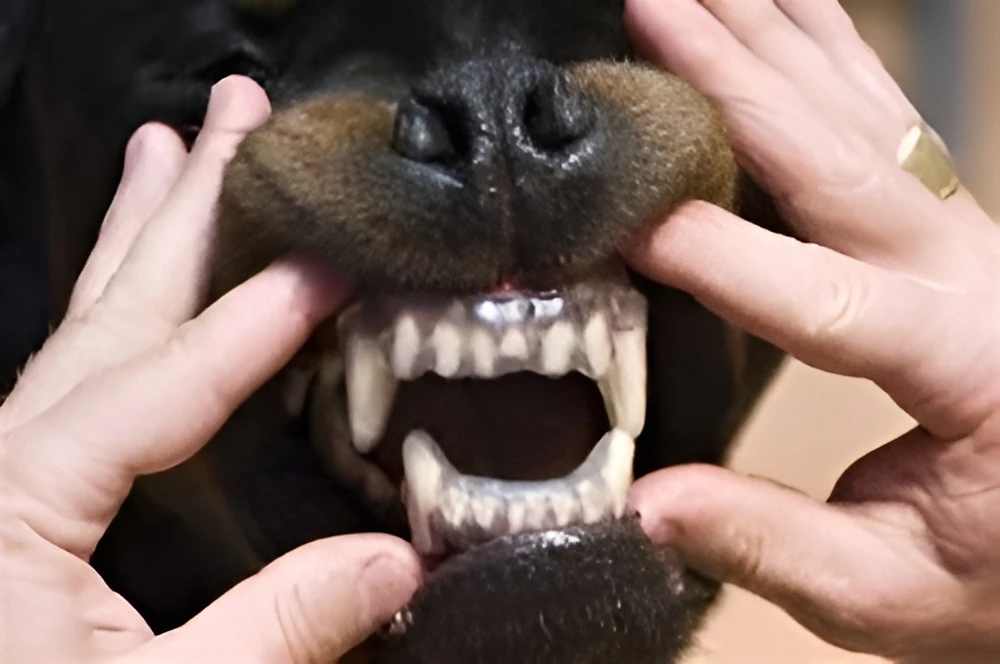 Source: Google Images
Source: Google Images
- Clear Aligners: These are a more discreet option, resembling the Invisalign braces for humans. They are made of clear, plastic-like materials and can be removed for eating and cleaning.
 Source: Google Images
Source: Google Images
- Headgear: Some severe orthodontic issues may require headgear, which applies gentle pressure to move the jaw and teeth into proper alignment.
The braces work by exerting constant, controlled pressure on the dog's teeth, guiding them into the correct position over time.
What Are The Signs That My Dog Needs Braces?
 Source: Google Images
Source: Google Images
Not every dog will require braces, but certain signs can indicate a need for orthodontic treatment. These signs include:
- Overcrowding: When your dog's teeth are tightly packed and overlapping, it can lead to issues with bite alignment.
- Misaligned Bite: A misaligned bite, whether overbite or underbite, can result in difficulty eating or even pain.
- Difficulty Chewing: If your dog struggles to chew food properly or exhibits signs of discomfort while eating, braces may be necessary.
- Excessive Wear: Premature wear of certain teeth can be a sign of orthodontic problems that require correction.
How Long Will A Dog Need To Wear Braces?
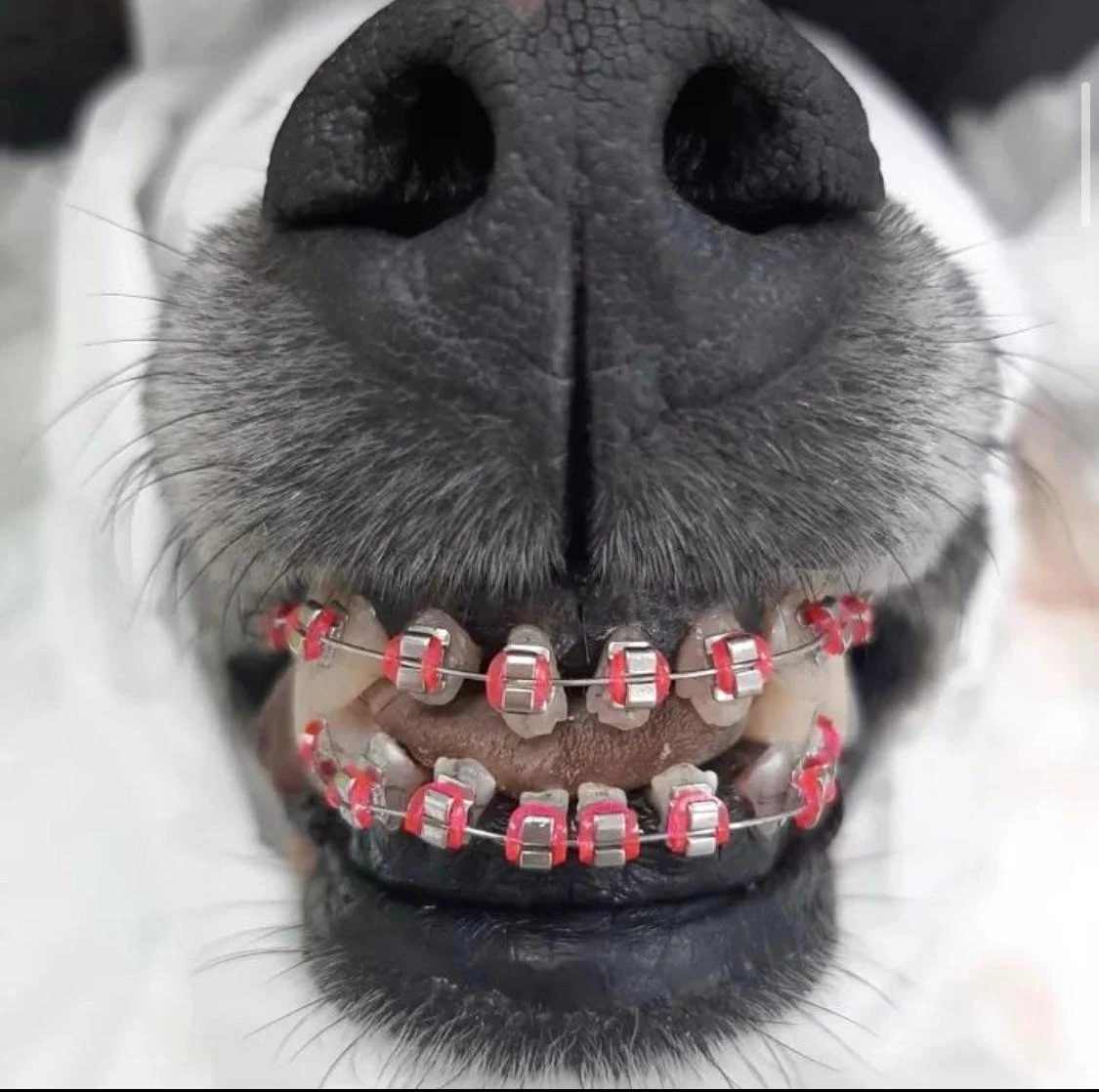 Source: Google Images
Source: Google Images
The duration of orthodontic treatment for dogs varies depending on the severity of the issue. Dogs wear braces for a much shorter period than humans do. On average, dogs wear braces for several months to a year.
The length of time depends on the dental issue and treatment progress. So, your veterinarian or orthodontist will provide a more precise estimate based on your dog's individual case.
When Is A Typical Age That A Dog Gets Braces?
 Source: Google Images
Source: Google Images
Orthodontic issues in dogs can occur at any age, but the best time to address them is during puppyhood, typically around 6 to 9 months of age. At this age, a dog's bones and teeth are still growing, making it easier to correct alignment problems.
However, dogs of all ages can benefit from braces if they have orthodontic issues.
How Much Do Dog Teeth Braces Cost?
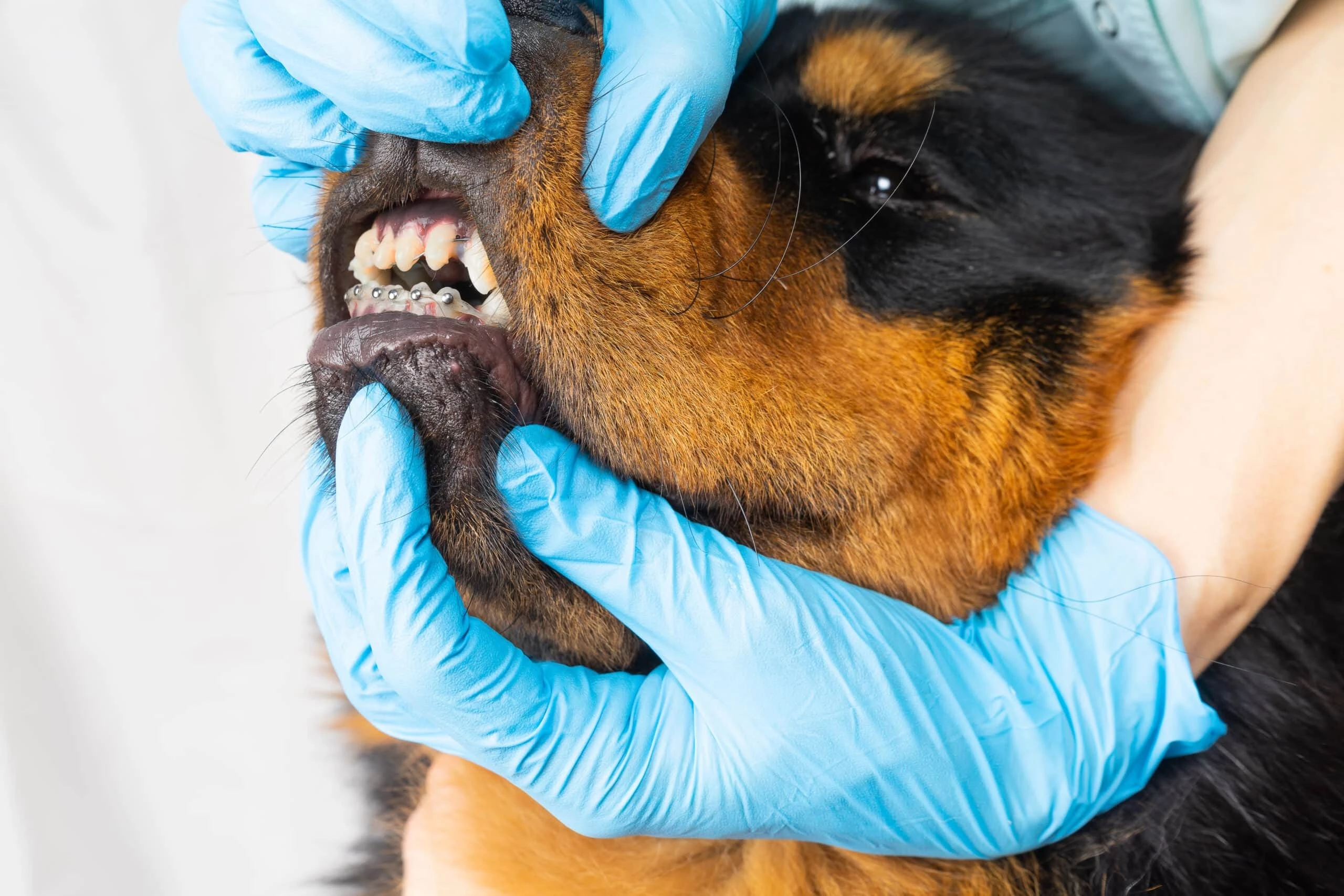 Source: Google Images
Source: Google Images
The cost of dog braces can vary widely depending on factors like the type of braces, the severity of the problem, and your location.
On average, you can expect to pay anywhere from $1,000 to $5,000 or more for canine orthodontic treatment. It's crucial to consult with a veterinary specialist to get a precise estimate for your dog's specific needs.
Does Pet Insurance Cover Dog Dental Costs?
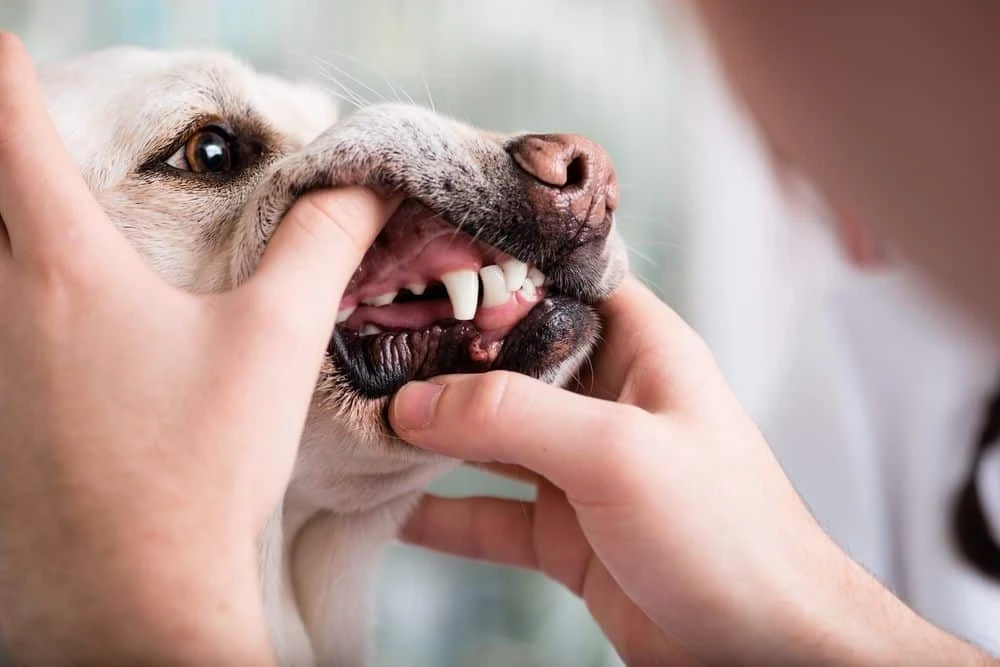 Source: Google Images
Source: Google Images
Pet insurance policies often vary in coverage, and dental care may or may not be included. Some insurance plans offer dental coverage, while others may require you to purchase an additional rider for dental procedures.
It's essential to review your pet insurance policy and discuss coverage with your provider to determine if orthodontic treatment is included.
How To Care For A Dog With Braces?
 Source: Google Images
Source: Google Images
Caring for a dog with braces involves a few essential steps:
- Regular Cleaning: Maintain proper oral hygiene by cleaning your dog's teeth and braces as recommended by the orthodontist.
- Follow Dietary Guidelines: Your vet or orthodontist will provide dietary instructions to ensure your dog's braces remain effective.
- Regular Check-Ups: Attend scheduled appointments to monitor your dog's progress and make necessary adjustments.
- Patience And Understanding: Be patient with your dog as they adjust to their braces, and provide plenty of love and care during the process.
Are There Any Options Besides Braces?
 Source: Google Images
Source: Google Images
There are a few different options available for teeth issues because braces are not always necessary for every dog.
Orthodontic Treatments:
There’s a ball that you encourage your dog to carry around in their mouth. The ball is typically rubber and should fit in your dog’s mouth in just the right way to exert gentle pressure on the teeth. This should help slowly reposition the tooth or teeth into the correct position.
Tooth Extractions:
Sometimes, the vet might just extract or file down problem-causing teeth. However, this isn’t always the best option because, while it’s cheaper, it is also sometimes only a temporary fix.
One Real-Life Story Of A Dog With Braces (Video)
Meet Wesley, the six-month-old Golden Retriever puppy who's won hearts worldwide as the adorable "brace face." In honor of National Pet Dental Health Month, Harborfront Hospital for Animals in Michigan shared a photo of the Wesley dog with braces to highlight the significance of dental health for pets.
Wesley's braces weren't for looks but rather a necessary treatment to help him close his mouth properly.
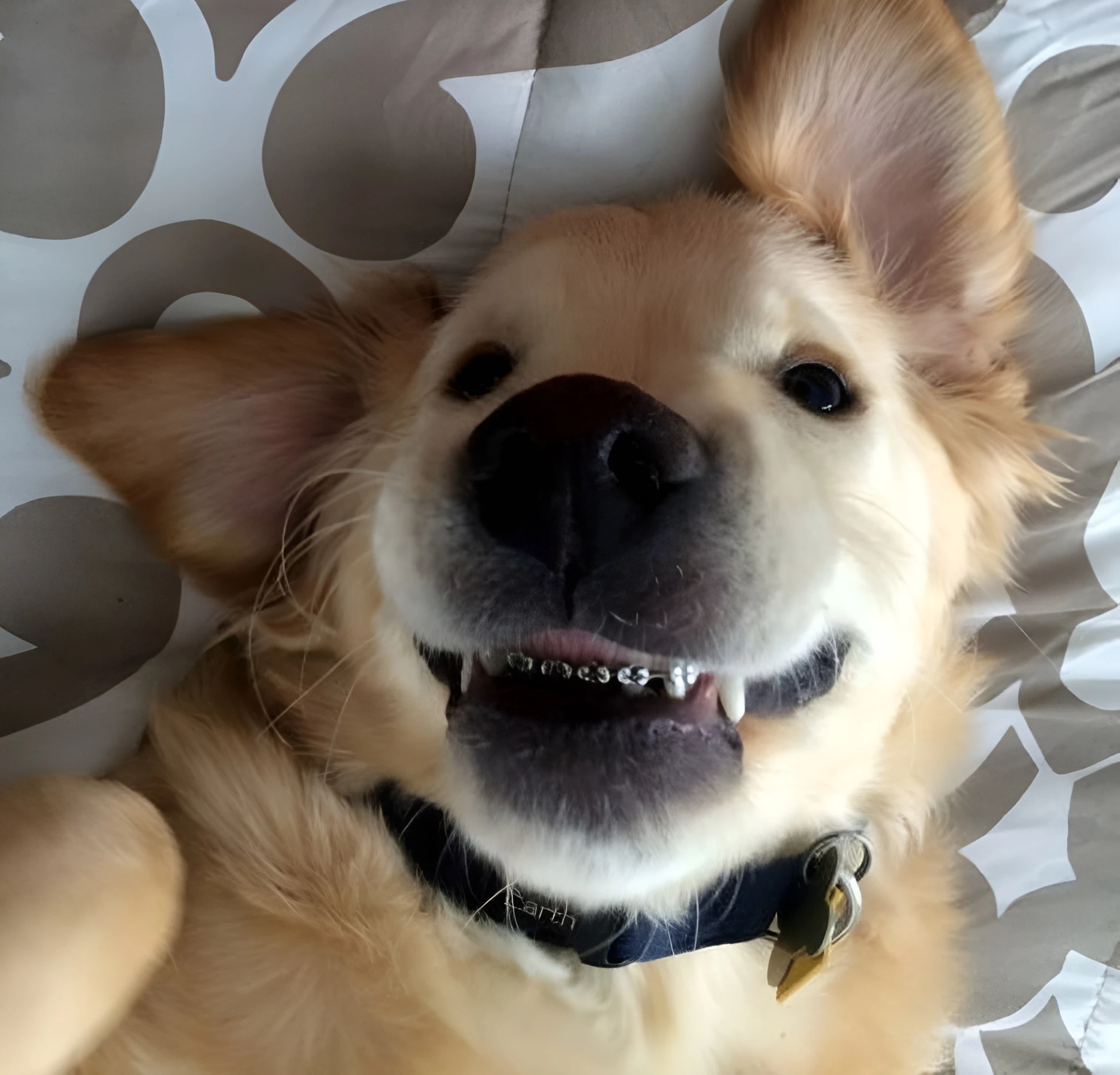 Source: Harborfront Hospital for Animals
Source: Harborfront Hospital for Animals
“[Wesley] needed tooth alignment because he could not close his mouth completely otherwise.”
Fortunately, his orthodontic journey will be brief, lasting only a few weeks.
From the picture posted, it's clear that the cute puppy, Wesley, doesn't seem bothered by his braces at all!
Conclusion
In conclusion, don't feel skeptical when you see a dog with braces because dogs can indeed have braces. The braces can be a valuable solution for correcting orthodontic problems.
If you suspect your dog may need orthodontic treatment, consult with a veterinarian or veterinary orthodontist to determine the best course of action.